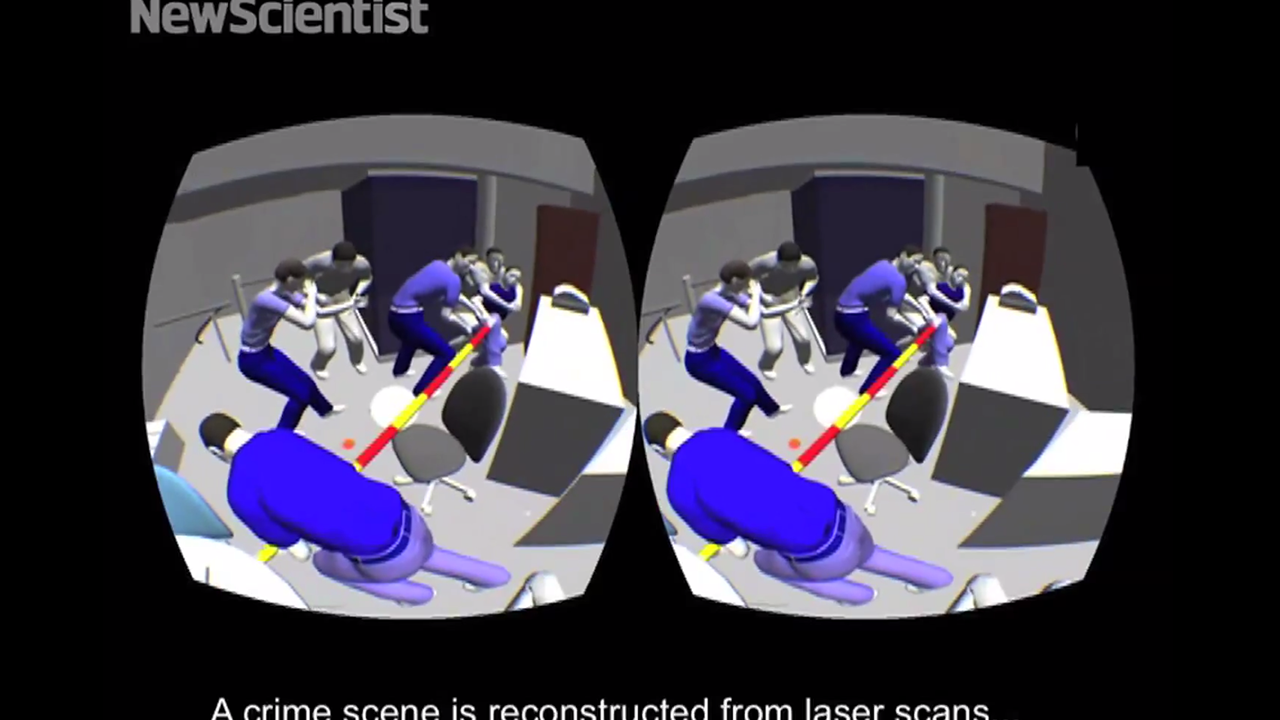Among the numerous applications of virtual reality is the possibility that it could be used to better inform jurors during criminal investigations. New Scientists reports on research by the Institute of Forensic Medicine in Zurich, Switzerland with that goal in mind, citing a current problem with the way 3D technology is used in the courtroom:
“We have detailed measurements and all this 3D information, but then we hand it over on paper, and that comes with a loss of information,” says Lars Ebert at the Institute of Forensic Medicine in Zurich, Switzerland, who works with police to collect evidence subsequently presented to judges and prosecutors.
While some courtrooms have already seen the advent of 3D-based information — such as 3D maps of the crime scene or body scans that show details of sustained injuries — there’s a translation problem. For example, in a gun crime case, the juries will see this:
Conventionally, bullet trajectories are presented in 2D – on paper. “What you have is a line on paper, and it’s difficult to get an idea of how it moved in space,” says Ebert. “But the second you see it in 3D, you know where it originated, where it goes, how close all the people and objects are.”
To address this issue, the team created the “forensic holodeck” using Oculus Rift and reconstructed the crime scene based on the information available. These were the results:
When Ebert presented the reconstruction to police officers who had been at the scene, they were impressed. “They said, ‘Wow, that was exactly what it was like when I was standing there and the guy was shooting me’,” says Ebert.
The anecdote is just that –an anecdote — but it shows the potential for the technology that researchers are eager to explore and tech companies are eager to develop.



